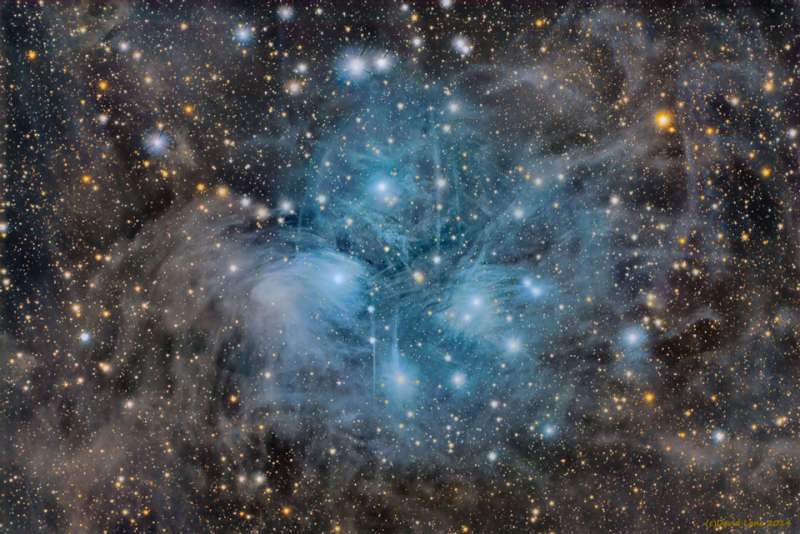Credit & Copyright: David Lane
Explanation:
The well known
Pleiades
star cluster is slowly destroying part of a passing cloud of
gas and dust.
The Pleiades
is the brightest
open cluster of stars
on Earth's sky and
can be seen from almost any northerly location with the
unaided eye.
The passing young dust cloud is thought to be part of
Gould's belt, an
unusual ring of young star formation surrounding the Sun in the
local Milky Way Galaxy.
Over the past 100,000 years, part
Gould's belt
is by chance moving right through the older
Pleiades and is causing
a strong reaction between stars and dust.
Pressure from the star's light significantly repels the dust in the surrounding blue
reflection nebula, with
smaller dust particles being repelled more strongly.
A short-term result is that parts of the dust cloud have become
filamentary and
stratified, as seen in the
above deep-exposure image.
1999 2000 2001 2002 2003 2004 2005 2006 2007 2008 2009 2010 2011 2012 2013 2014 2015 2016 2017 2018 2019 2020 2021 2022 2023 2024 2025 |
Yanvar' Fevral' Mart Aprel' Mai Iyun' Iyul' Avgust Sentyabr' Oktyabr' Noyabr' Dekabr' |
NASA Web Site Statements, Warnings, and Disclaimers
NASA Official: Jay Norris. Specific rights apply.
A service of: LHEA at NASA / GSFC
& Michigan Tech. U.
|
Publikacii s klyuchevymi slovami:
pleiades - star cluster - dust - Pleyady - otrazhatel'nye tumannosti - pyl'
Publikacii so slovami: pleiades - star cluster - dust - Pleyady - otrazhatel'nye tumannosti - pyl' | |
Sm. takzhe:
Vse publikacii na tu zhe temu >> | |
